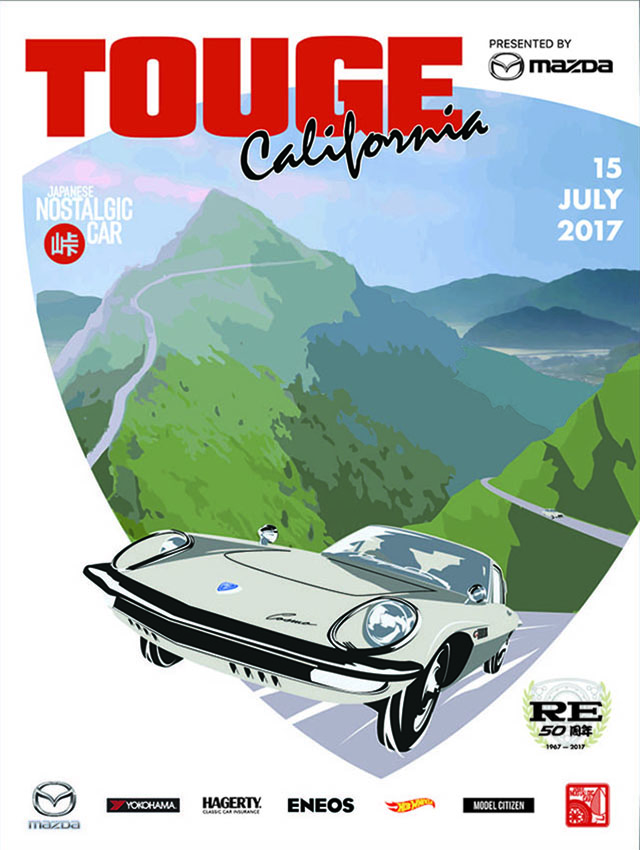Speaking of the Nissan March, Nissan Great Britain has just updated one of its wildest creations. Originally built 23 years ago, the Micra 350SR is what happened when Nissan GB crammed the ubiquitous VQ35 V6 engine midship into the back of the K12 March. To celebrate its ni (2 in Japanese) san (3 in Japanese) birthday, they’ve updated it for the modern age.
Nissan says that back in 2002 it created the Micra 350SR to “demonstrate the Micra platform’s adaptability and to celebrate the model’s little-known racing pedigree in Japanese motorsport.” On that metric it’s a big fail because most westerners still think of the Micra as a mundane subcompact without much sporting potential.
In Japan it was a different story. Nissan held a one-make race called the March Cup that served as the brand’s entry-level series. It started in 1984 (the same age as Masahiko Kondo’s car) and lasted all the way until 2009.
The March was also a tuner favorite, with third party shops like TommyKaira and Nissan’s own Autech performance arm issuing their own versions of the K12. Not only did these cars feature the typical exhaust, suspension and aero upgrades, but both cracked open the engine with serious mods to bump horsepower from the stock 82 to over 100.
Of course, we in the west prefer to shoehorn in a big motor instead, and that’s what Nissan GB did. In its original configuration, called the Micra R, Nissan enlisted the help of the team that built Nissan’s BTCC championship-winning Primeras, swapping in one of their race-built SR20s mounted midship and a Nissan Almera suspension from the subframes down.
According to Evo Magazine, that version wasn’t exactly streetable due to the narrow, high-rpm powerband of the race motor and dogbox transmission. So Nissan swapped out the SR20 for a VQ35 and a H-pattern manual. Some accounts say it was from a 350Z, other say a Murano, but same diff. After installing high-lift cams and a modified ECU horsepower was upped to “around 300” and the car was renamed the Micra 350SR.
Nissan let journalists loose behind the wheel, and that’s how, as Evo says, the car was eventually crashed into a tree at Cadwell Park. Nissan fixed it and sent it off to live with Evo in their long-term fleet for a while, but it was eventually returned to Nissan GB’s care.
Now the car has a second (or maybe third) lease on life. There’s a new Micra EV coming soon, so Nissan decided to give the 350SR a makeover. The 350SR has also been given a new finish called “liquid silver” with blue graphics meant to evoke the Z32’s taillights. The original’s silver and red livery was shared with a decade’s worth of Nissan JGTC cars, including 2003’s championship-winning Xanavi R34 and 2005’s championship-winning Fairlady Z.
The interior has new seats and harnesses, as well as a 9-inch touchscreen with Apple CarPlay and Android Auto functionality. New LED headlights and semicircular DRLs help modernize it and link it with the design of the upcoming EV. Though we still prefer the old livery, we get the need for a new look and it’s good to see that the bonkers Micra 350SR is still alive and kicking.
Images courtesy of Nissan.














Those March and Micra cup races where awesome…
This marks the first and only good use of a VQ35…
I kid, but you’ve gotta admit having an SR20 race motor in the back was way cooler, streetability be damned
What about Stellantis (Former FIAT-PSA) ?
… Curiously, the one-off Nissan Micra (aka Nissan March) seen on this article – as well as its texts shown and written here – not only explains and thus emphasizes Nissan’s past-present records in major motorsports series – mostly international ones, all of which only have scored victories (but little successes) upon the Japanese carmaker’s (Nissan’s) 1992 withdrawal from the World Rally Championship (WRC) – currently the only global racing series Nissan competes in is Formula E (for the same reasons Nissan’s planned partner Honda does with MotoGP and Formula One / F1), but also – as given Nissan’s recent financial state and among others (especially with the aftermath of the 2016-2020 Brexit, the pandemic and the 2022 Ukraine-Russia crisis) – the midship and V6-powered Micra / March even shown (despite that the K12 Micra / Micra was one of those cars that expressed Nissan’s “renaissance” after the 1999 merger with Europe’s Renault hence the model had began to utilize Renault’s anatomy out of the Clio / Lutecia) that its an example of how Nissan / Datsun (and much of Japan’s carmakers like Honda and among others) have experienced a lot (even) two decades after the crash(ing) of its (Japan’s) economy – following Toyota’s departure from the WRC in the same year Renault acquired Nissan meant that the Micra / March didn’t help Nissan to return in the (WRC) series. (Likewise, Fiat and Renault didn’t even made a comeback in WRC especially after Peugeot replaced Toyota as the series’ top manufacturer between 2000 ’till 2005, while other Japanese makers which continued to compete in WRC after the 1990s and 2000 had managed to remain in the series until Mitsubishi pulled out in 2005 while Subaru and Suzuki followed suit in 2008.)
Plus, the mid-engined Micra / March was something that Nissan didn’t took on the Toyota MR2 (aka Toyota MR in France and Belgium) when the latter first appeared in 1984, although the with former Datsun marque made a concept car of similar specifications named MID4, but due to issues with costs and as well as the Japanese economy becoming endangered (among others like South Korea’s ascendancy for the next decades) during that period as a result, therefore the idea of building of a midship car by a Japanese car manufacturer was not only it eventually passed to Toyota (MR), Honda (NSX) and to a lesser extent Mazda (then Ford) and Suzuki (then General Motors / GM) with the [Autozam] AZ-1 (for Mazda) and Suzuki Cara, but also with the MR layout Micra / March being one-off meant that two decades after it happened – it even reveals the declination of the Japanese automotive business especially following the 2018 removal of Carlos Ghosn from post as Nissan’s CEO.
But in other news, Sebastien Ogier have scored a hat-trick of seventh wins in WRC’s Portuguese rally recently with the Toyota GR Yaris Rally1, at least with the Yaris’ production run continues with two different exterior designs – one for developed and the other for developing markets, so as with Toyota being the only Japanese WRC participant and the next round of the series coming next month this year (in Sardinia, Italy from June 5-8) – where Toyota have been losing to Hyundai (except 2021 with Ogier too), therefore the industrial collapse of Germany (even after 1989-1990) and fears of South Korean domination in each fields (over Japan and others with the addition of World Touring Car Cup’s demise three years ago) even before the 21st century (as well as today) would have called for Stellantis (successor company of PSA Peugeot Citroen and Fiat SpA later Fiat Chrysler Automobiles) not only to partner with Honda and the whole Renault-Nissan-Mitsubishi alliance – which may only lead to former PSA / FCA to liquidate two of them similar to Chrysler Europe and GM Europe – but also Toyota would load off its ownerships in Hino, Daihatsu, Yamaha, Subaru, Mazda, Suzuki and Isuzu to Stellantis which would only lead to the latter becoming the biggest car manufacturers in the world… (But also, the sale and demise of Toyota’s rivals at home plus Yamaha Motor and fellow non-carmaker Kawasaki to Stellantis would make Japan the latter’s largest overseas base similar to GM with the Republic of Korea, as former Peugeot CEO Jean-Philippe Imparato said that time “this is an alliance of winners”…)